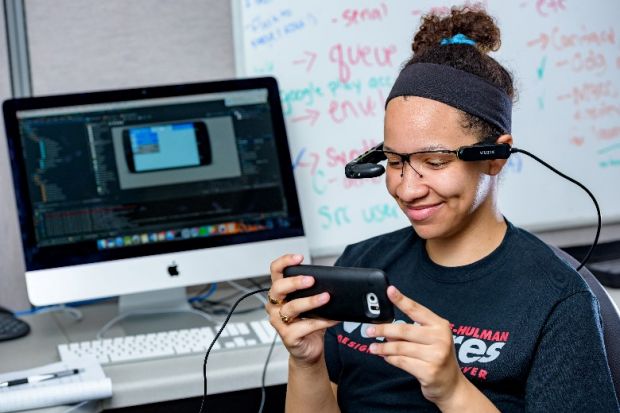In a world of universities being asked to more clearly show value, Indiana’s Rose-Hulman Institute of Technology is gaining national attention as a possible model for converting US research knowledge into commercial growth.
For the past 20 years, the private rural campus of about 2,000 undergraduates has been running a unique fee-for-service programme in which companies can get low-cost help overcoming technological hurdles.
Its successes include a nearly 100 per cent post-graduation job placement rate and a string of companies that it helped to develop new products in fields including healthcare, food, travel and software.
Rose-Hulman’s admirers now include a key federal lawmaker, Maria Cantwell, chair of the Senate’s science policy committee, who has been touting the concept after visiting the campus more than 2,000 miles (3,200 kilometres) from her state of Washington.
Ms Cantwell recently held out Rose-Hulman as an example while leading a Senate hearing to push a $100 billion (£70 billion) Democrat-led plan to create a new division of the National Science Foundation (NSF) focused on product development.
The campus initiative, known as Rose-Hulman Ventures, suggests the possibility of arranging many more US universities into regional hubs where they could solve corporate innovation needs, Ms Cantwell said.
“In that case,” she said, “there isn’t a big NSF dollar amount.”
Leading members of both the Democratic and Republican parties have spoken supportively of a major new infusion of federal dollars into university-based research, seeing a critical need to remain competitive with investment by other countries, especially China. But in a sharply divided Congress with only narrow Democratic control, less expensive options may prove the key to finding solutions that can win enough votes.
Rose-Hulman Ventures, for all its success, does have some central features that don’t yet appear to have been replicated elsewhere in US higher education, said Richard Stamper, a former director of the initiative and now the Rose-Hulman provost.
Its main facility is a 30,000-square-foot (2,800-square-metre) building on about 100 acres a short distance from campus, loaded with advanced testing equipment and machinery, where some 40 to 80 students work at any given time on 10 to 30 client projects.
Their experience, however, is considered fully separate from their academic structure, said Dr Stamper, a professor of mechanical engineering and engineering management. That means a “different level of expectation” from what is common with course-based projects, including professional staff engineers at Rose-Hulman Ventures, who ensure the promised work gets done.
“Students are free to fail a class and not deliver a very good product in the context of a class,” Dr Stamper said. By comparison, he said, “the students working at Ventures aren’t working in the context of a class at all – we’re happy to fire them if they are not producing what they need, and if the project starts to look not feasible, we can shut the project down.”
Celebrated examples from the history of Rose-Hulman Ventures include a query by a small Indianapolis company that made needles for biopsies to take tissue samples from human patients. It wanted the students to figure out a way to mechanise the biopsies by adding small, motorised devices to their needles that would cut and suction out the needed tissue samples. The student work on that project has led over the years to the company making new devices for brain surgeries and breast biopsies.
The success of Rose-Hulman Ventures, Dr Stamper said, lay in the value it gives both students and their private-sector partners, who are charged below-market rates and are allowed to keep the rights to the resulting discoveries.
“Largely our motivation is to provide great educational experiences for our students,” he said. “We’re not looking at it as a way to gain a long-term revenue stream from intellectual property.”





